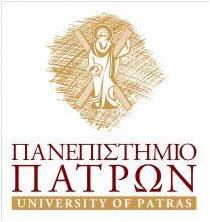Advanced Light Microscopy
Equipment: Leica TCS SP5 Confocal Microscope equipped for live-cell imaging.
Leica TCS SP8 Multiphoton Microscope
Supported Methodologies: Confocal Microscopy, Epifluorescence Microscopy,3D reconstruction, Time-lapse Microscopy, FluorescenceRecoveryAfterPhotobleaching (FRAP), FluorescenceLossinPhotobleaching (FLIP), Förster Resonance Energy Transfer (FRET), localized DNA damage.
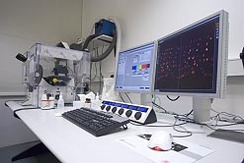 |
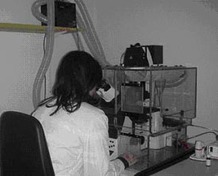 |
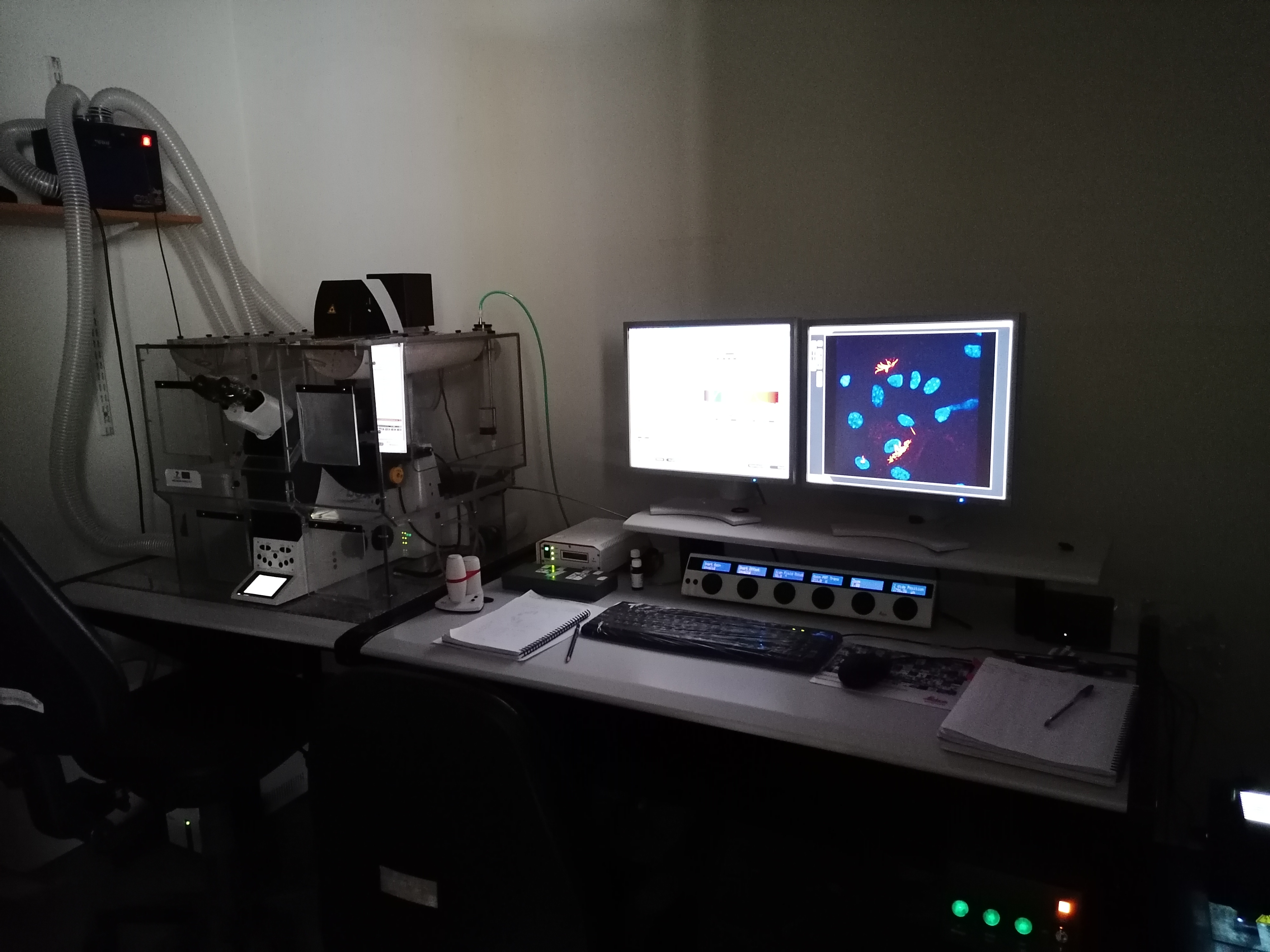 |
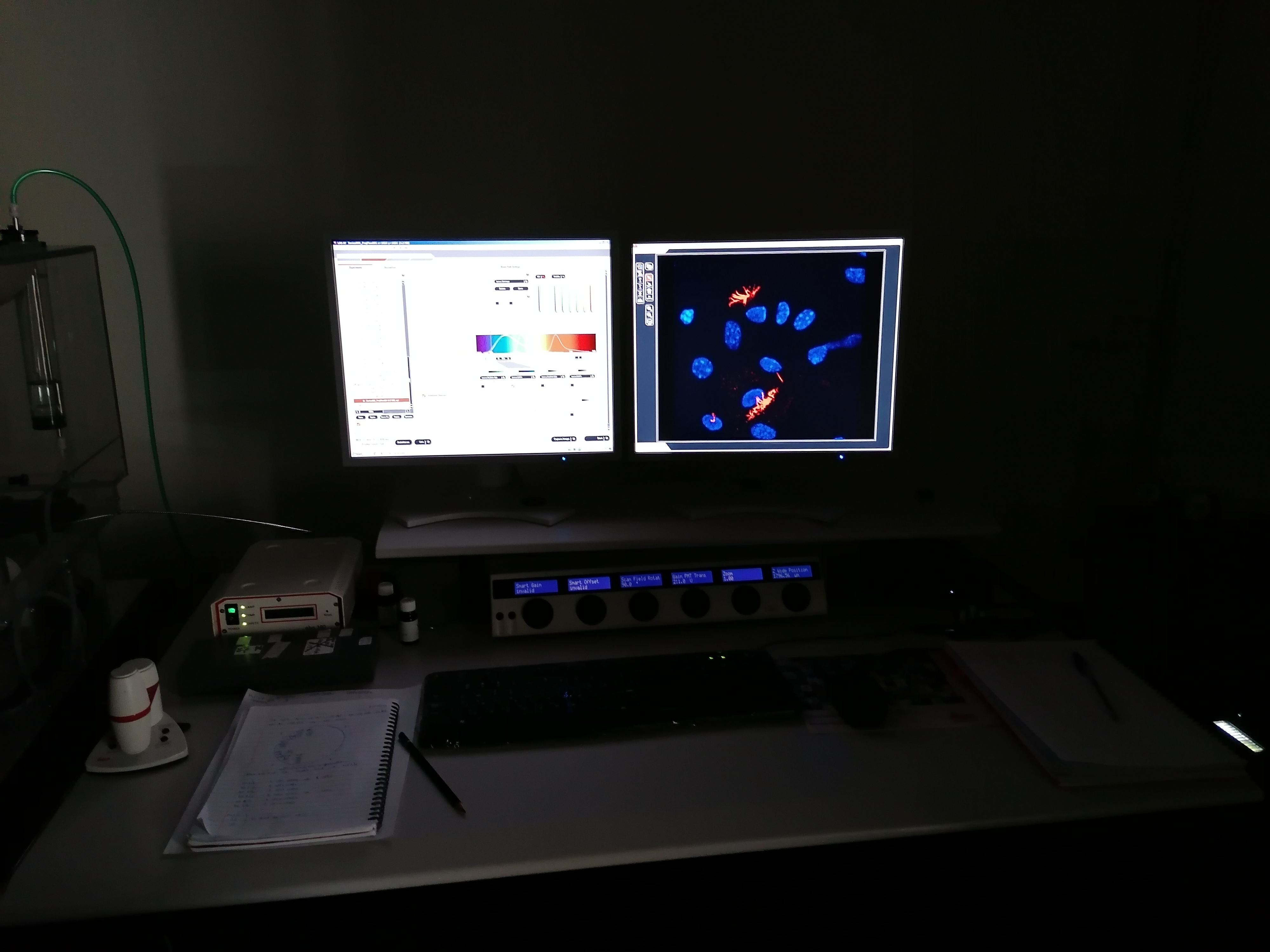 |
Applications: Co-localization of multiple fluorophores within cells and tissues, functional imaging, proteininteractions in living cells, stem cell analysis, cell-based assays for drug validation.
Animal House
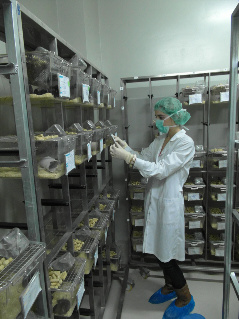 The Animal House in the University of Patras is a fully equipped facility located in the ground floor of the Medical School where animals are kept in conditions with regulated ventilation, temperature, light and relevant humidity, monitored on a 24 hour basis. There are housed more than 3500 small animals including transgenic and knockout mice, rats and rabbits used, for research purposes by members of the Patras Medical School. The Animal House includes a fully equipped surgical room, with facilities for in utero electroporation and stereotactic injection, as well as rooms equipped for metabolic experiments. High standards of biosafety are preserved in all rooms, while the use of animals follows the 3R guiding principles (Replacement, Reduction and Refinement).
The Animal House in the University of Patras is a fully equipped facility located in the ground floor of the Medical School where animals are kept in conditions with regulated ventilation, temperature, light and relevant humidity, monitored on a 24 hour basis. There are housed more than 3500 small animals including transgenic and knockout mice, rats and rabbits used, for research purposes by members of the Patras Medical School. The Animal House includes a fully equipped surgical room, with facilities for in utero electroporation and stereotactic injection, as well as rooms equipped for metabolic experiments. High standards of biosafety are preserved in all rooms, while the use of animals follows the 3R guiding principles (Replacement, Reduction and Refinement).
In Utero Electroporation
In utero electroporation technique has been established a few years ago from our Research Team in the Animal House at the University of Patras. In our laboratory we take advantage of the technique in order to study brain development and neurogenesis. Between lines, we introduce plasmid DNA into the brain ventricles of embryos from a timed female pregnant mouse, aiming to overexpress or delete a specific gene, whose function we wish to study. More specifically, DNA of interest is introduced into the mouse brain, followed by the application of an electrical pulse in order to guide DNA to a specific brain region. Therefore, we are able to study genes function in vivo without the need of a specific transgenic mouse line. The device used for the electroporation is the Electron Square PoratorTM ECM830 by BTX® HARVARD APPARATUS. The 1-10 μl micropipettes, are prepared with Narishige PC-10 micropipette puller, a dual-stage micropipette processing system which provides reliable and consistent production of micropipettes by pulling the glass capillary vertically.
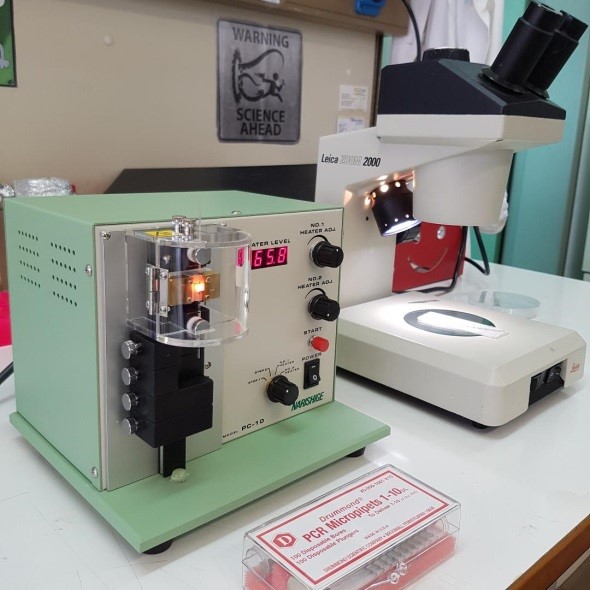 |
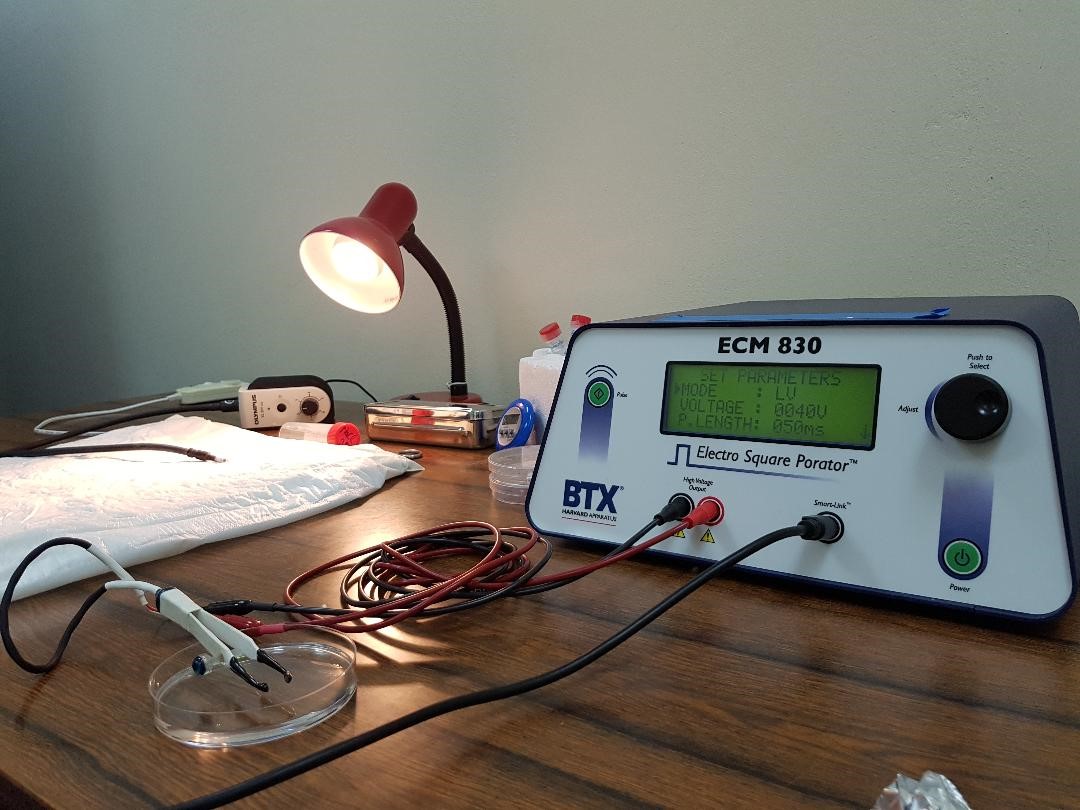 |
Microarray Analysis
Εquipment: Microarray ScannerScanArrayExpress(PerkinElmer), HybridiserHybArray12 (PerkinElmer), Bioanalyser 2100 (Agilent)
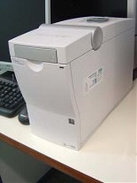 |
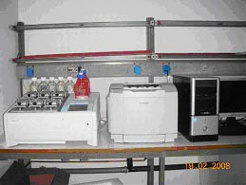 |
Supported Methologies:Microarray Analysis, Microanalysis
Applications: High-throughput gene expression analysis, Genotyping, SNP Analysis
Modern Blot and Gel Imaging System
Equipment: Chemidoc MP Imaging system, Biorad
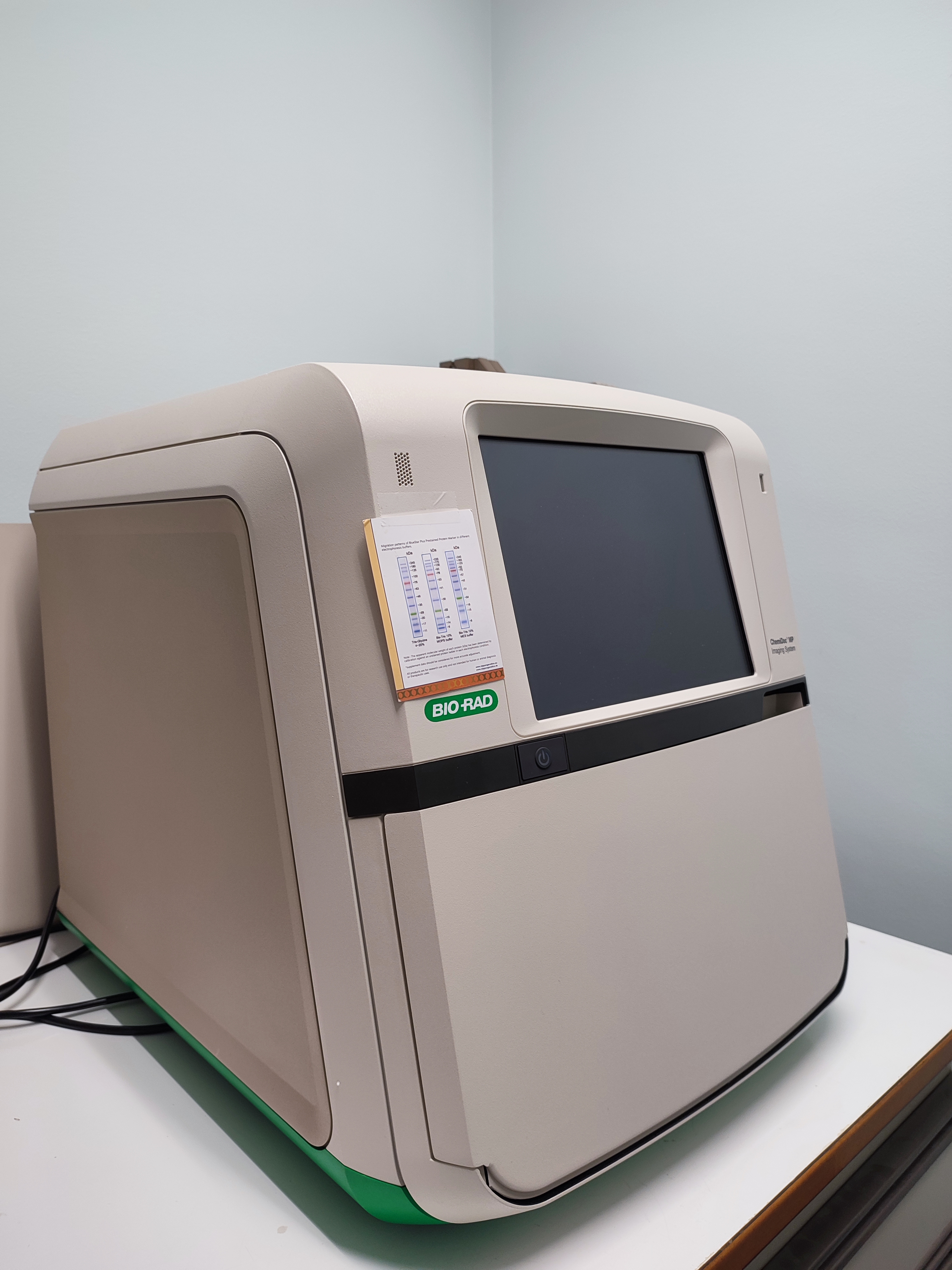 |
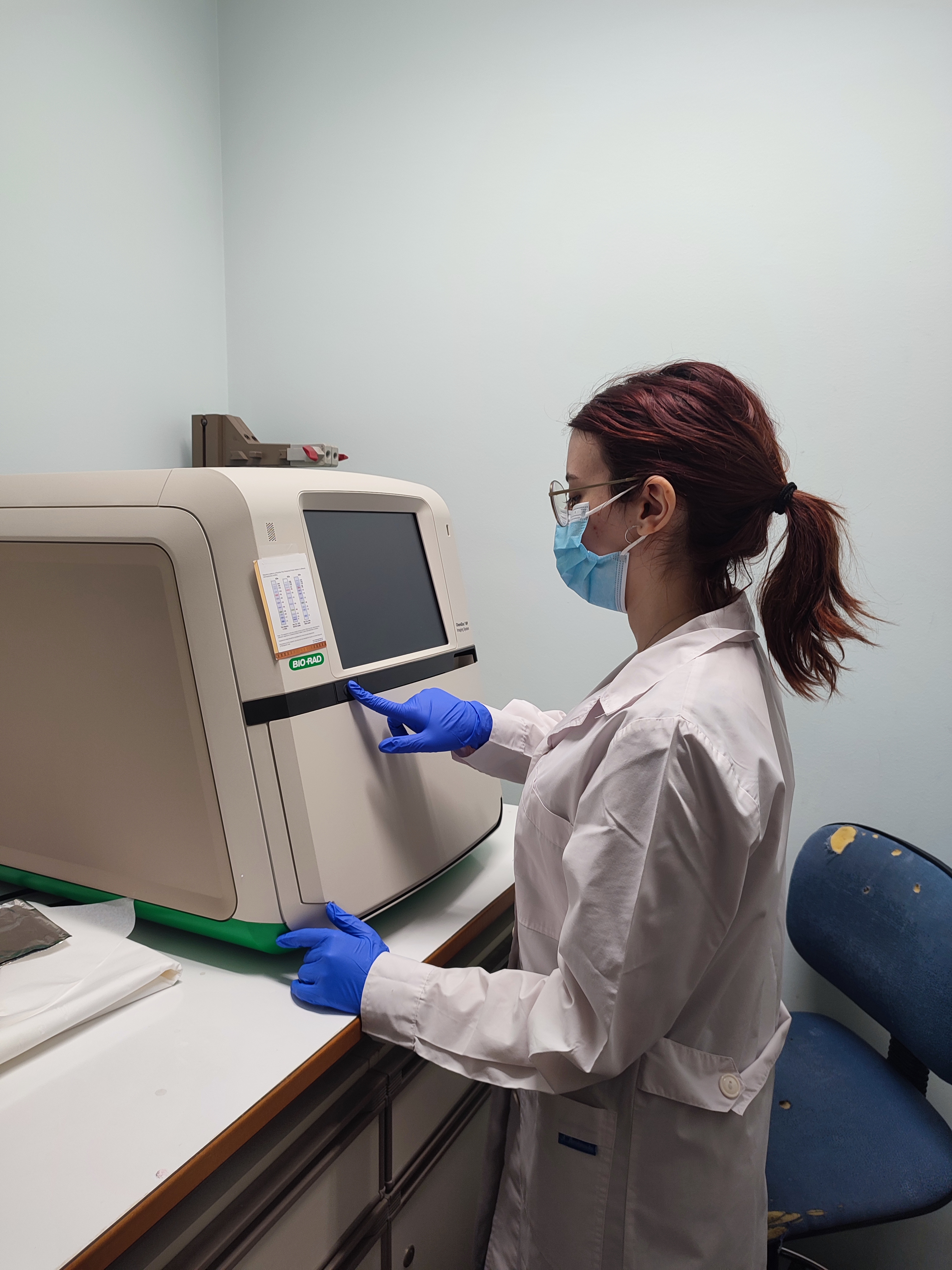 |
Applications: Western Blot, 2-D Electrophoresis, Imaging and Analysis, Horizontal Nucleic Acid Electrophoresis, Stain-Free Imaging Technology
DNA Sequencing System
Equipment: Ion GeneStudio™ S5 System, Thermo Fisher Scientific
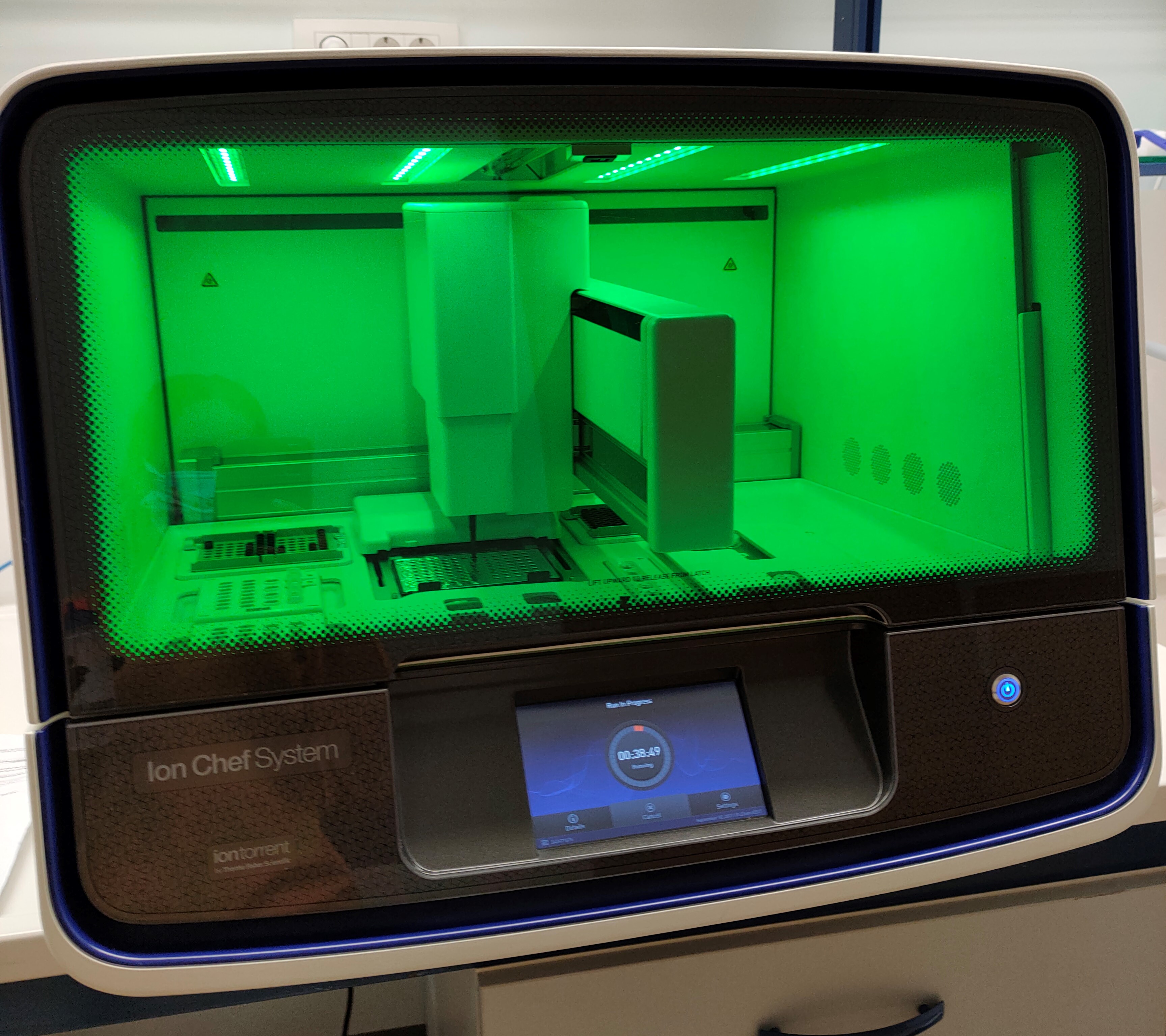 |
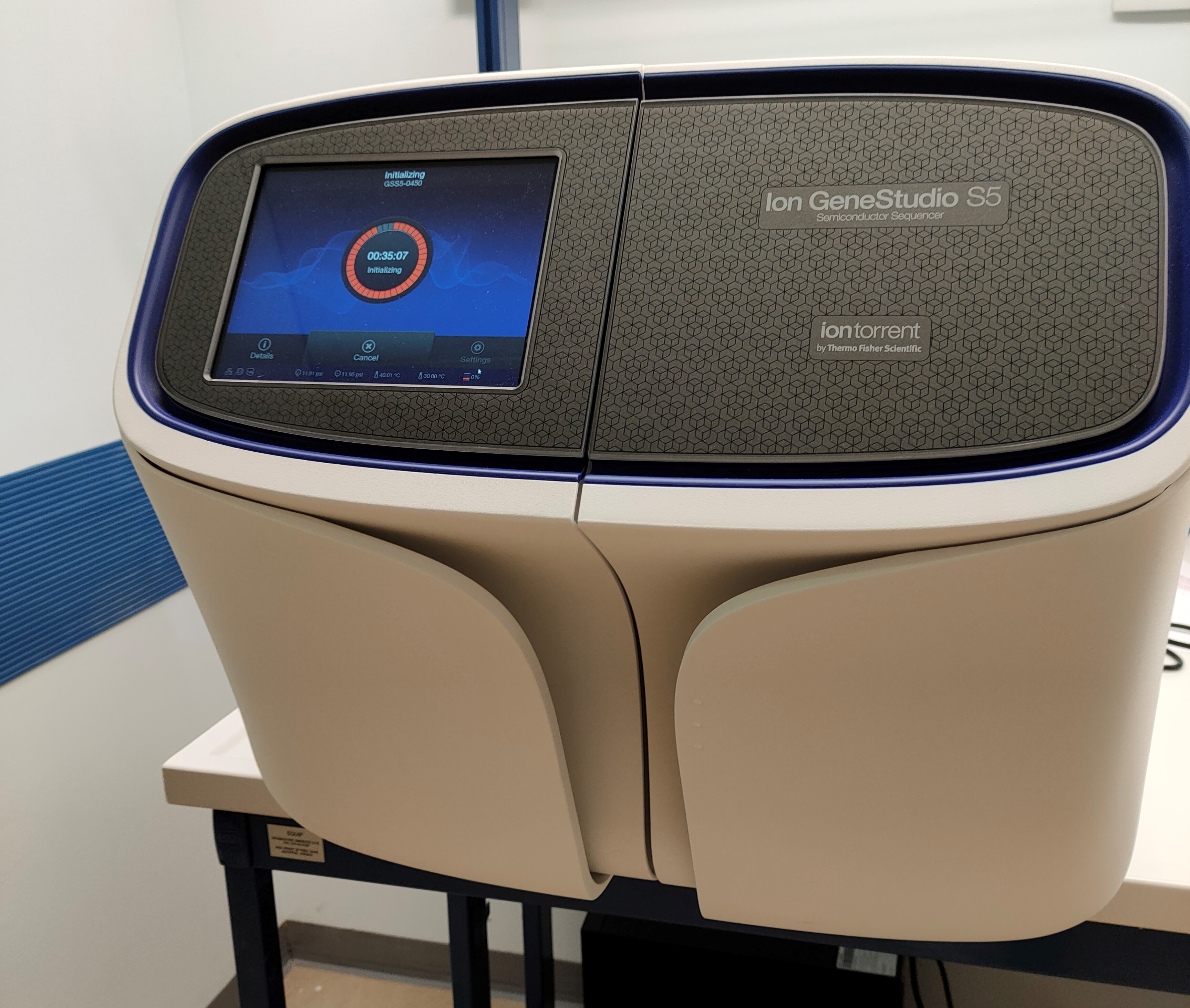 |
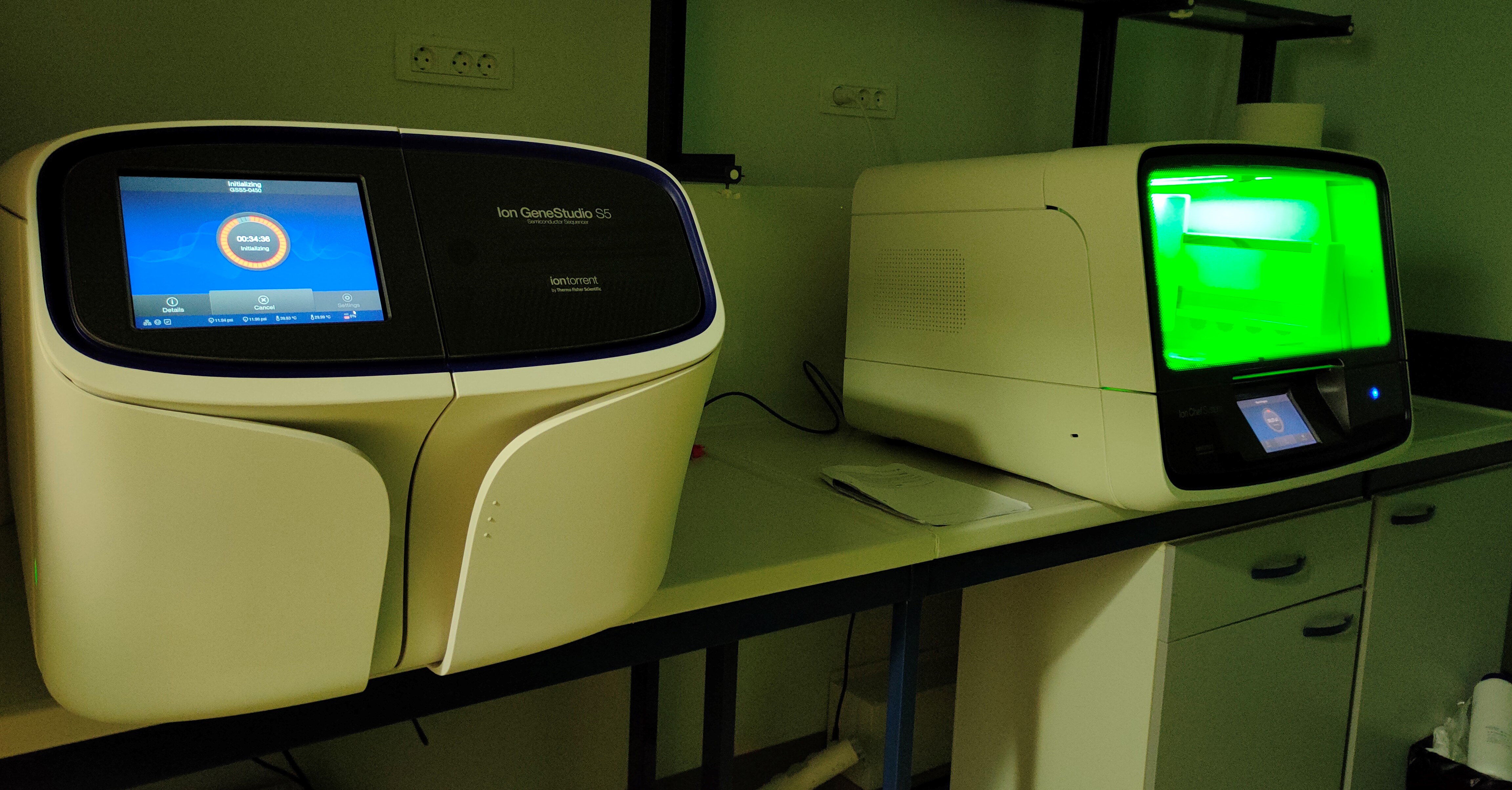 |
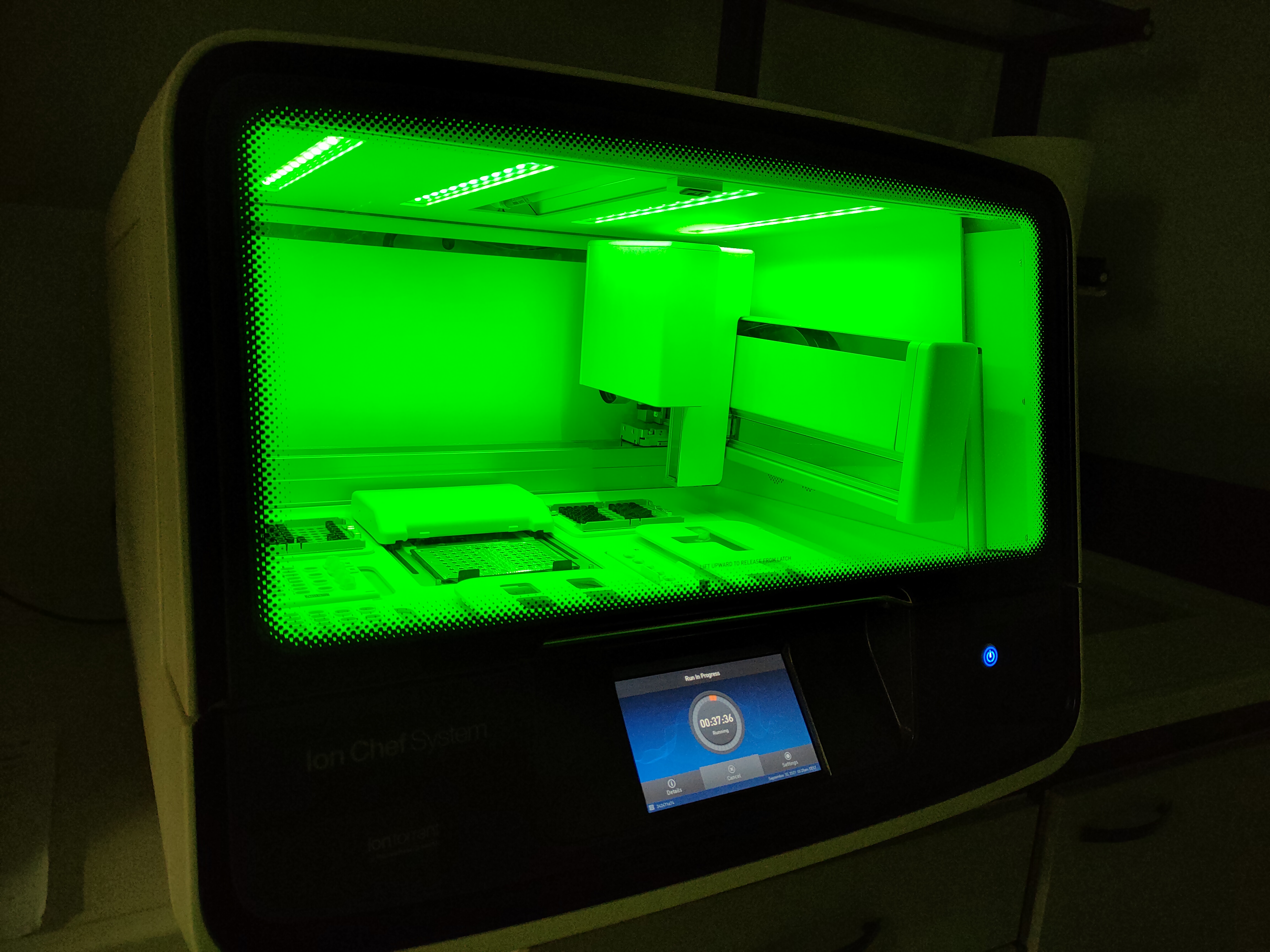 |
Applications: Ion Torrent™ Next-Generation Sequencing, SARS-CoV-2 Pathogen Research Solutions
Cryosection
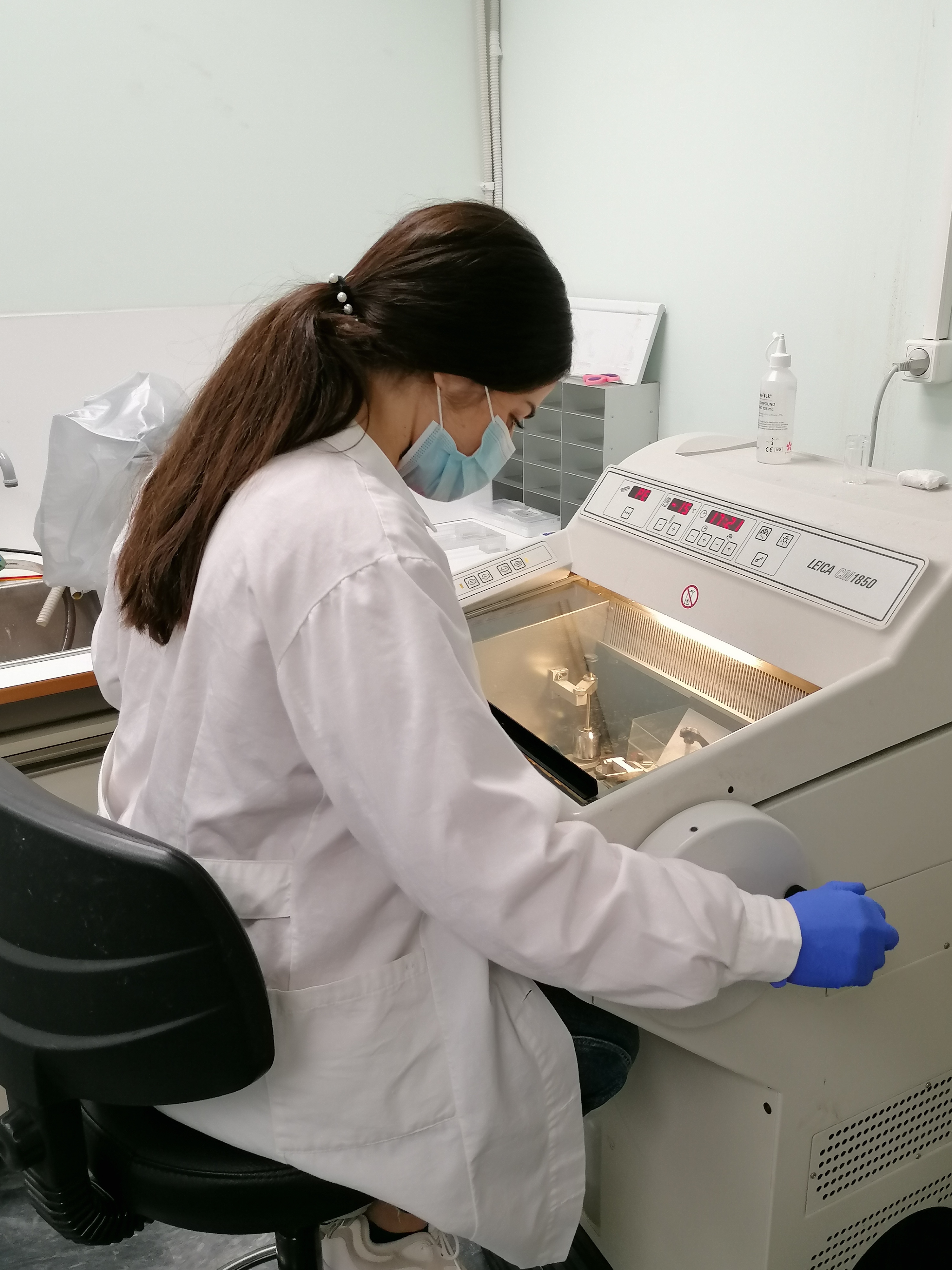 The cryostat is a specialized instrument composed of a tissue microtome (cryotome) installed within a cooling chamber that allows for rapid freezing of tissues and a continuous process of cutting tissue at low temperatures (typically around − 15 to −30°C), which can later be used in Immunofluorescence assays.
The cryostat is a specialized instrument composed of a tissue microtome (cryotome) installed within a cooling chamber that allows for rapid freezing of tissues and a continuous process of cutting tissue at low temperatures (typically around − 15 to −30°C), which can later be used in Immunofluorescence assays.



